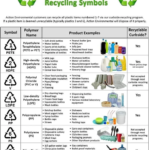‘Teal Carbon’ study: Wetland importance in tackling the challenges of climate adaptation and resilience

India’s inaugural study, ‘teal carbon’, by Keoladeo National Park (KNP) in Rajasthan’s Bharatpur district highlights the crucial role of wetland conservation. It also underscores the importance of wetland in tackling the challenges of climate adaptation and resilience.
The study aimed to quantify the carbon sequestration potential of non-tidal freshwater wetlands across the country.
The study objective was to identify the key risks these wetlands faces. It recommends the conservation and restoration of wetlands.
It highlighted the potential of wetlands in carbon sinks. The study, suggests the integration of its conservation into the climate change strategies.
Carbon sink is any system that absorbs more carbon than it emits. The main natural carbon sinks are soil, forests and oceans.
LEARNING FROM HOME/ WITHOUT CLASSES/ BASICS
Sustainable development means development that meets the needs of the present. And without compromising the ability of future generations to meet their own needs.
A carbon footprint corresponds to the whole amount of greenhouse gases (GHG) produced to, directly and indirectly, support a person’s lifestyle and activities. Carbon footprints are usually measured in equivalent tons of CO2, during the period of a year. They can be associated with an individual, an organization, a product or an event, among others.
Climate change
Describes a change in the average conditions — such as temperature and rainfall — over a long period of time.
Global warming is the long-term heating of Earth’s climate system observed since the pre-industrial period (between 1850 and 1900). Due to human activities, primarily fossil fuel burning, which increases heat-trapping greenhouse gas levels in Earth’s atmosphere.
Anthropogenic carbon dioxide: It is related to the influence of human beings or their ancestors on generating carbon dioxide. For ex. such as the burning of fossil fuels rather than by such processes as respiration and decay.
The most commonly produced greenhouse gas is carbon dioxide. Carbon sequestration is the process of capturing and storing atmospheric carbon dioxide. It is one method of reducing the amount of carbon dioxide in the atmosphere. The goal is to reduce global climate change.






0 Comments